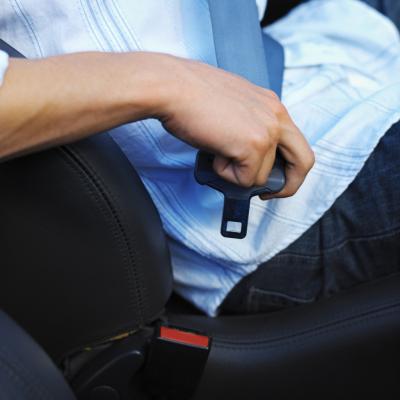Safety belts help prevent deaths by keeping people inside their vehicles during crashes, preventing fatal blows within the vehicle and reducing the risks of internal injuries. While myths exist suggesting some negative aspects of seat belt use, national safety officials say those are largely misconceptions and that statistics show seat belts help save lives.

The first seat belts were placed in American cars in the 1900s to keep people in the car on rough roads rather than to protect them in wrecks. Belts were installed in race cars in the 1920s and finally in a couple of cars on the open market in 1950. Until the 1960s, the auto industry was unregulated, and safety got little attention. In 1966, the Highway Safety Act and the National Traffic and Motor Vehicle Safety Act were passed. This legislation gave the federal government the power to regulate the auto industry. Eventually, seat belts became standard equipment.

Safety belts prevent people from being ejected from cars. You are 25 times are more likely to be killed or seriously injured if you are thrown from a vehicle, according to John Hopkins University.

Seat belts reduce the effects of the three potentially deadly forces that are triggered during a wreck, according to The Prevention Institute. The first force is the car hitting the object. The second is the body crashing into the inside of the car. The third is the body's organs colliding with bones. A seat belt works by stopping the force of the body so that it doesn't continue to travel at the car's speed before the crash. The belt also spreads the force of the abrupt stop over the larger parts of the body, including the pelvis, chest and shoulders.

The National Safety Council outlines myths about seat belts. One is that a seat belt can put you in danger if your vehicle is on fire. The council says this is not a significant risk because a seat belt can easily be detached and won't prevent escape. Another is that wearing a seat belt will make it harder to escape if the car is submerged in water. The council says seat belts actually help by keeping the passenger in one place, making it easier to force open a door or window.
LawsThirty states have primary seat belt laws that allow law enforcers to ticket people who aren't wearing safety belts independent of any other violations. Nineteen states have secondary laws, which mean police can ticket people for not wearing seat belts only if they are stopped for another possible violation. New Hampshire is the only state that has no safety belt laws for adults.
StatisticsAbout 35,000 people die in motor vehicle crashes each year, and nearly half of those fatalities could have been prevented if the victims had worn seat belts, according to data published by James Madison University. From 1975 to 2007, more than 240,000 passengers who were in car crashes would have died if they hadn't been wearing seat belts, according to the National Highway Traffic Safety Administration. More than 15,000 lives were saved by seat-belt use in 2007 alone.
